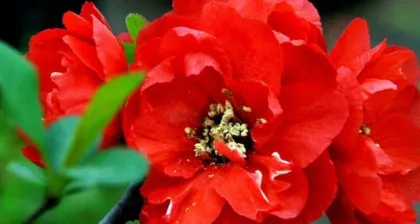Crabapple flowers, as highly ornamental flowers, are indispensable in many people's eyes. However, some people are concerned about their toxicity and wonder if they are suitable for indoor cultivation. This article will analyze the toxicity of crabapple flowers and provide some indoor care techniques to help everyone better appreciate the beautiful crabapple flowers.

Classification and Characteristics of Crabapple Flowers
Crabapple is a deciduous shrub belonging to the Rosaceae family. Its flowers are elegant and colorful, making it one of the treasures in horticulture.
Toxicity Analysis of Crabapple Flowers
According to surveys, crabapple flowers contain large amounts of toxic components, including oxalic acid, triterpenes, glycosides, etc. If ingested accidentally or come into contact with skin, they can cause varying degrees of toxic reactions.

Toxic Reactions of Crabapple Flowers
When humans accidentally ingest or come into contact with crabapple flowers, they may experience gastrointestinal discomfort, vomiting, diarrhea and other symptoms. At the same time, skin contact with crabapple flowers can cause redness, pain and other discomforts.
Indoor Care Tips: Choosing Soil
When selecting soil, choose soil with good permeability and rich nutrients to ensure that crabapple flowers can fully absorb nutrients.
Indoor Care Tips: Controlling Light
Crabapple flowers love sufficient sunlight, but strong light exposure can damage them. When cultivating indoors, pay attention to controlling the intensity of light to avoid excessive sun exposure.

Indoor Care Tips: Controlling Humidity
Crabapple flowers are not tolerant of dryness and need to maintain appropriate humidity. You can control indoor humidity by spraying water, using humidifiers and other methods.
Indoor Care Tips: Fertilization
Crabapple flowers need adequate nutrients to ensure growth and development. Organic fertilizers can be used, applied once a month to provide sufficient nutrition.
Indoor Care Tips: Pruning
Pruning is an important measure to maintain healthy growth of crabapple flowers. During the growing period, branches should be pruned regularly to control their shape and promote flower bud growth.
Indoor Care Tips: Pest and Disease Prevention
Crabapple flowers are susceptible to insect pests and diseases, so timely measures should be taken for prevention and treatment. Environmentally friendly and non-toxic agents can be used, sprayed on leaves and flowers to effectively prevent the occurrence of pests and diseases.
Recommended Crabapple Varieties
When choosing crabapple varieties for indoor cultivation, you can select according to your preferences and interests. For example: mountain crabapple, purple crabapple, yellow crabapple, etc.
Indoor Cultivation Precautions: Placement Position
When placing crabapple flowers, choose a well-ventilated and sunny position. Avoid placing them in damp and dark places, which will affect their healthy growth.
Indoor Cultivation Precautions: Avoid Overwatering
Crabapple flowers are not tolerant of waterlogging, and overwatering can lead to root hypoxia and affect growth and development. When watering, pay attention to the amount and avoid overwatering.
Indoor Cultivation Precautions: Regularly Changing Soil
Crabapple flowers grow quickly and easily deplete soil nutrients. Soil should be changed regularly to provide new nutrients.
Indoor Cultivation Precautions: Controlling Temperature
Crabapple flowers have high temperature requirements, with an optimal temperature range of 18°C-28°C. When cultivating indoors, control the temperature to avoid the effects of excessively low or high temperatures.
As a beautiful flower, the toxicity issue of crabapple flowers needs to be noted. When conducting indoor cultivation, one should master the corresponding techniques and precautions to ensure its healthy growth and ornamental value. It is hoped that this article can provide some useful references for everyone.
<|end_of_box|>